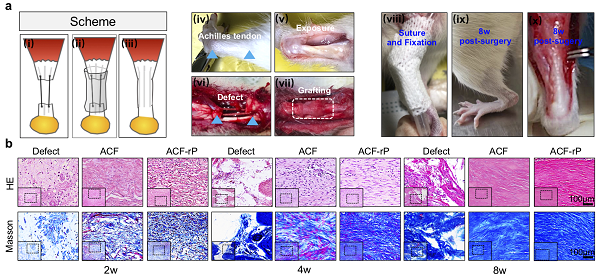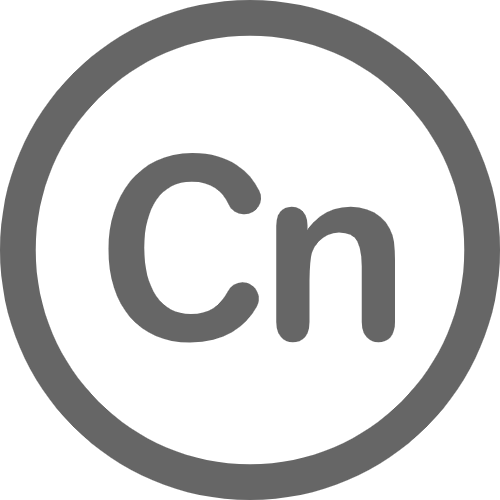Functional Regeneration and Repair of Tendons Using Biomimetic Scaffolds Loaded with Recombinant Periostin
Liu Yan et al. recently published an article in the journal Nature Communications entitled, "Functional regeneration and repair of tendons using biomimetic scaffolds loaded with recombinant periostin" , which documents use of an innovative parallel-aligned extracellular matrix scaffold fabricated via a dynamic diffusion template self-assembly strategy to accommodate tendon stem/ progenitor cells (TSPCs) and promote tendon formation.

Tendon injuries disrupt the balance between stability and mobility, resulting in compromised function, joint instability, long-term pain and disability. While significant progress has been made in stem cell-mediated bone regeneration, the regeneration of mature, functional tendons remains a formidable clinical challenge. In this article, successful regeneration of functional tendons was reported using an innovative biomimetic scaffold loaded with recombinant periostin (rPOSTN), as identified by transcriptional profiling of tendon developmental processes. The major novel findings were as follows:
1. Although biological events underlying the modulation of embryonic tendon development have been closely studied, how they orchestrate postnatal tendon maturation in a manner similar to that of tendon regeneration, and whether related cues can be translated into practical applications, remain largely unknown. To identify potential cues that promote tendon regeneration, gene expression changes associated with tendon development were compared using transcriptional profiling. The findings revealed that periostin, a secreted extracellular matrix protein that regulates cell–cell and cell–matrix interactions, is highly expressed during early tendon development, but downregulated in adult tendons. Notably, periostin was found to exert vital regenerative functions, such as promoting TSPC stemness and differentiation.
2. To mimic the physicochemical architecture, a tendon-like parallel-aligned extracellular matrix scaffold was designed using a dynamic diffusion template self-assembly strategy that accommodated TSPCs and facilitated tendon formation.
3. Using a rat full-cut Achilles tendon defect model, the biomimetic scaffold loaded with rPOSTN was found to efficiently promote TSPC recruitment, and tendon regeneration and repair via the formation of native-like hierarchically organized collagen fibers. Moreover, the newly-regenerated tendons with rPOSTN exhibited significant recovery of mechanical properties and locomotion function.
Taken together, these findings suggest that structural and functional tendon regeneration and repair via rPOSTN stimulation of TSPC stemness and differentiation represent a simple and translatable therapeutic strategy that avoids difficulties associated with cell transplantation and complex delivery systems.
last text: Deng Xuliang's and Wei Yan's team has made innovative progress in chiral material research
next text: The PKU-SS — The Only Specialized Hospital Shortlisted for the Top 10 China Hospital Knowl…






